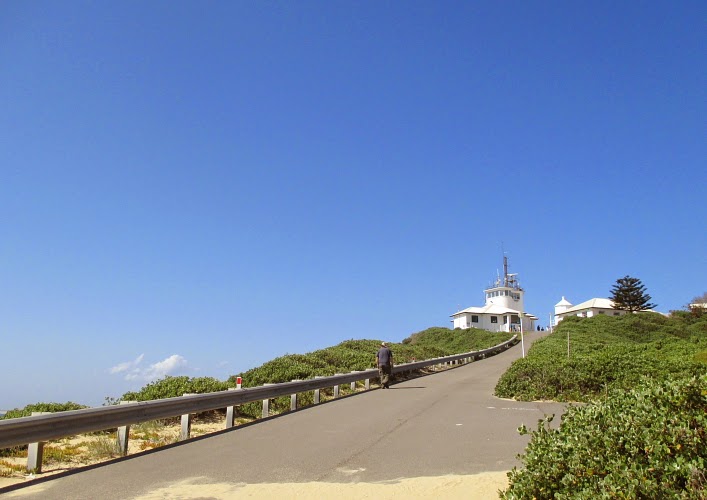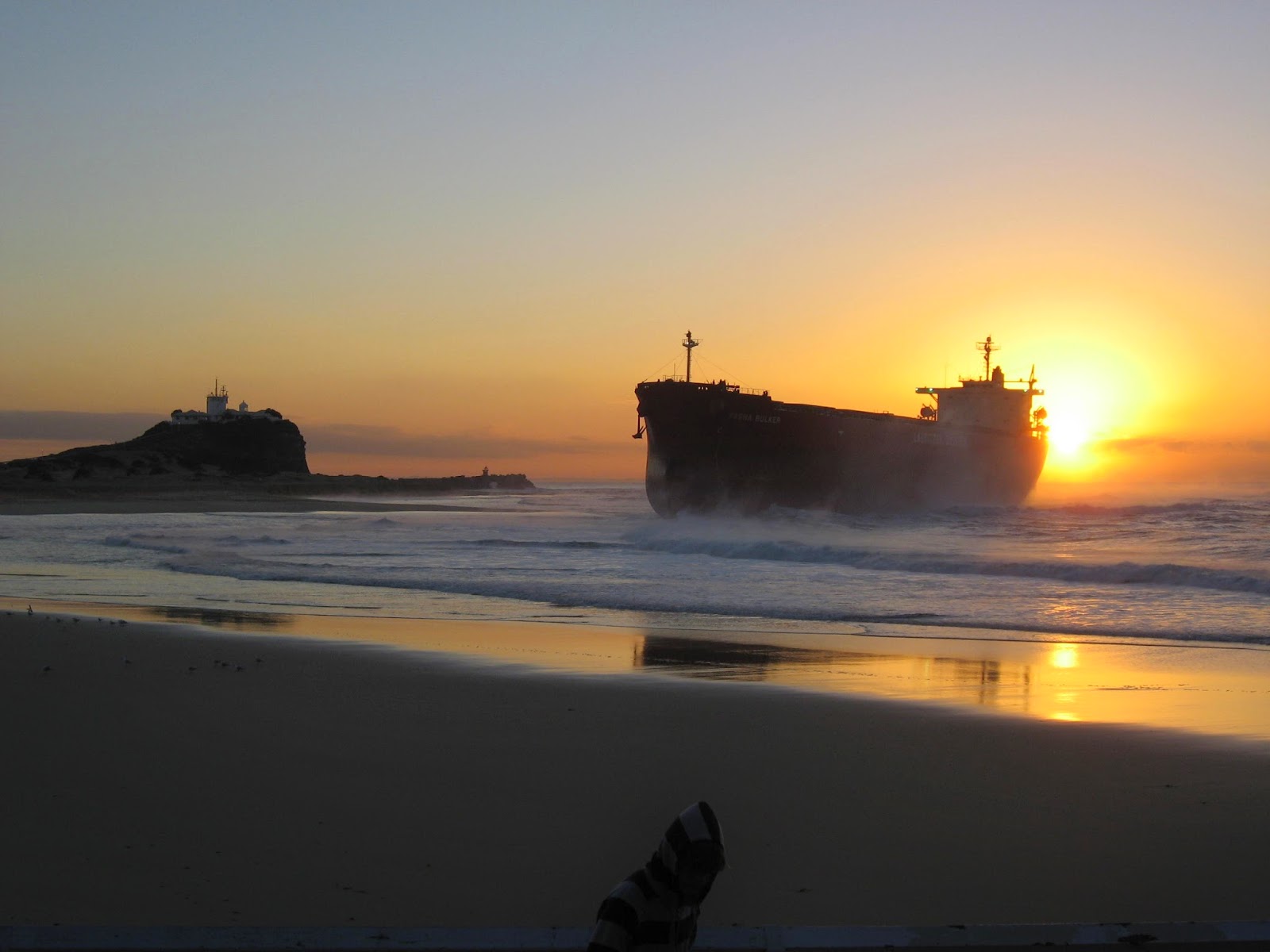 |
| Towards Nobbys Lighthouse |
 |
| from Nobbys Lighthouse |
 |
| Harbour entrance, from Nobbys Lighthouse |
 |
| Historical image fromlakescan.com.au |
With its prominent position at the entrance to the Port, a lighthouse was built and just after midnight
on the 1st January 1858, the light came into operation. At that time, the light burnt China Tea Oil,
which gave a more brilliant light than kerosene and was less dangerous. It was later replaced by a fixed, incandescent kerosene vapour lamp. In 1935 the 100,000 candlepower light was changed to 580,000 candlepower, visible at a height of 35 metres above sea level.When Governor Macquarie ordered a pier to be built to join Nobbys to the mainland, convict labourwas chosen to do the construction.The building of the pier was a hazardous job with the convicts having to work under all sea andweather conditions, night and day. Many lives were lost to the sea during the 38 years it took to build. The rock taken from Nobbys to reduce its height was used in the pier's construction. (information from www.lakescan.com.au)
.
And here is where the "arty" connection is and the real reason for taking the walk to Nobbys - the lighthouse was host to "Coastal Journeys", an exhibition by artists from the Hunter Arts Network. The opening was a tribute to the Aboriginal significance of Nobbys and the legend of the angry kangaroo still residing at Nobbys was retold by Member for Newcastle, Sharon Claydon who officiated at the opening. ( PS my work is visible in the background)
Nothing more to say about a coastal journey to Nobbys but to quote Australian poet, Judith Wright...
Turn home, the sun goes down; swimmer, turn home.
Last leaf of gold vanishes from the sea-curve.Take the big roller’s shoulder, speed and serve;
come to the long beach home like a gull diving.











My husband was involved in the restoration of the cottages. I'm extremely proud. I love the history of Nobbys and the lighthouse. I wish we learnt more of it at school
ReplyDeleteThank you for sharing some of the history of Nobbys. It's such a wonderful vantage point to view the city and such an interesting place to visit. I love your photos taken while you walked up to the lighthouse - the honeycomb appearance of the rock is such a familiar image from many years of walking along the Nobby's breakwall.
ReplyDelete